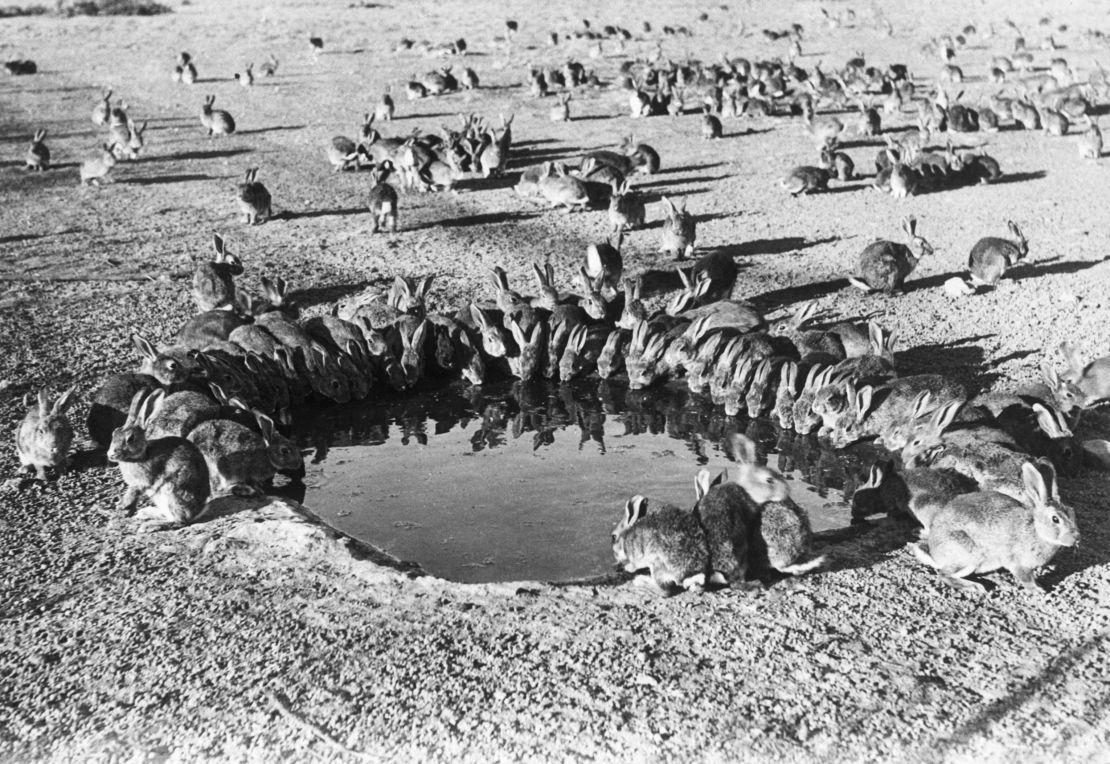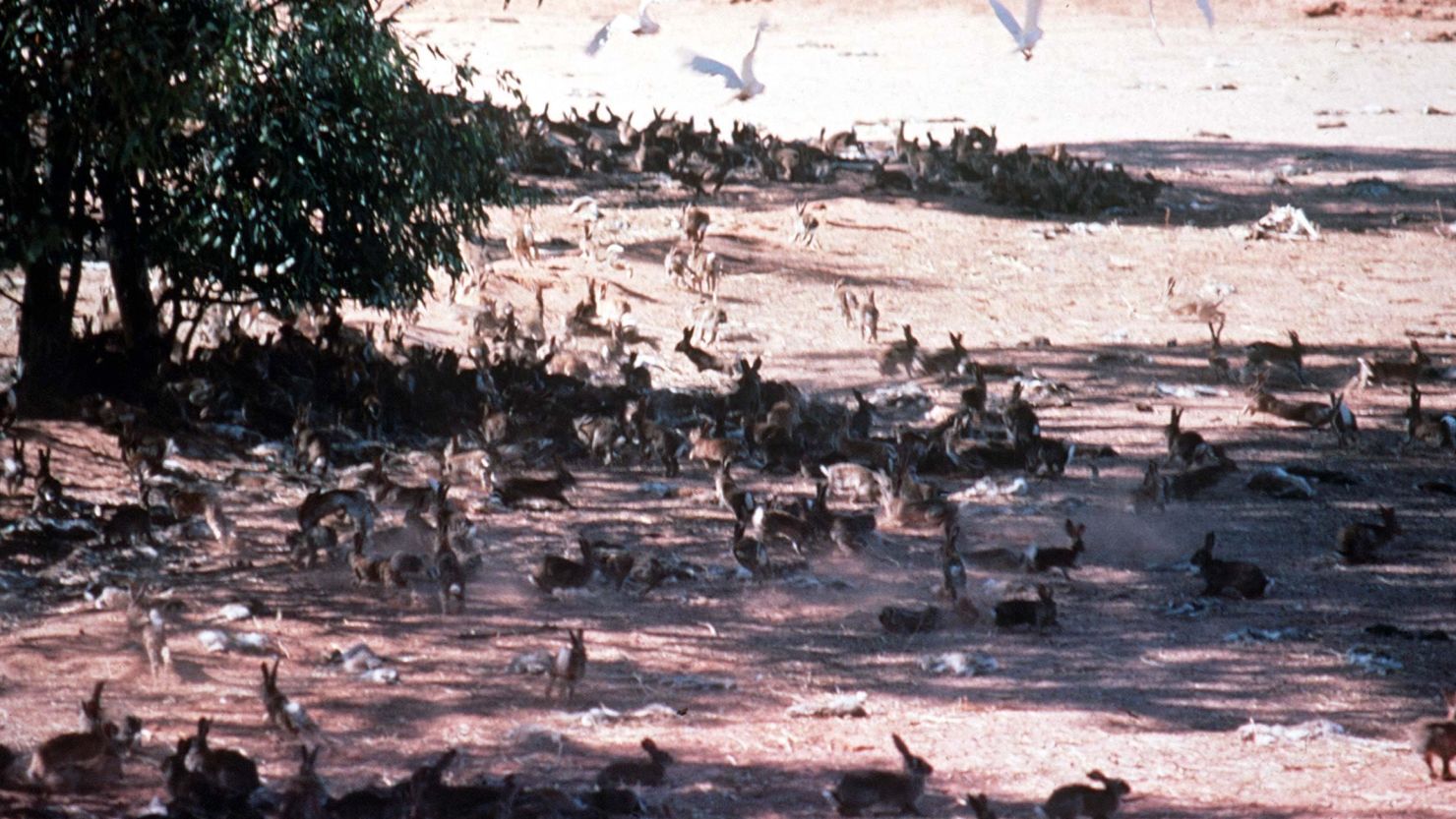What seemed like an innocent Christmas gift of 24 English rabbits in 1859 would go on to become Australia’s “most devastating biological invasion,” according to a new study by the Proceedings of the National Academy of Sciences.
Wild rabbits are not native to Australia and are considered an invasive species. Farmers say the animals multiply quickly and destroy their crops and land, which can lead to massive soil erosion and other environmental issues.
“Biological invasions are a major cause of environmental and economic disruption,” researchers wrote.
“(And) the colonization of Australia by the European rabbit is one of the most iconic and devastating biological invasions in recorded history.”
Using historical accounts, researchers were able to piece together genetic evidence linking this invasion to English rabbits imported in 1859 by a settler named Thomas Austin, tracing the population back to Austin’s birthplace in England.
According to historical records, Austin had started off with just 24 rabbits on his sprawling Melbourne estate. But within three years, the animals had multiplied into the thousands – and kept on breeding, researchers noted.
“Our findings show that despite the numerous introductions across Australia, it was a single batch of English rabbits that triggered this devastating biological invasion – the effects of which are still being felt today,” said lead author Joel Alves, also a researcher at the University of Oxford.
“That single event triggered this enormous catastrophe in Australia; the fastest colonization rate for an introduced mammal ever recorded.”

While Austin was not the first person to introduce rabbits to Australia – five of the animals had been aboard the First Fleet of British ships that reached Sydney in 1788 and at least 90 more importations were made over the next 70 years – it was the descendants of his 24 rabbits that would come to dominate the continent, the study said.
And it concluded that nearly all of Australia’s 200 million wild rabbits can be traced to that fateful shipment he received in 1859.
“Environmental change may have made Australia vulnerable to invasion,” researchers said. “But it was the genetic makeup of a small batch of wild rabbits that ignited one of the most iconic biological invasions of all time.”
The researchers also studied how the population of rabbits had managed to survive and thrive in Australia’s harsh wilderness.
Genetic analysis revealed that unlike earlier Australian rabbits, which displayed domesticated traits like “tameness, floppy ears and fancy colored fur,” rabbits descended from Austin’s brood had a large amount of wild ancestry.
“If animals are bred for domestication, one of the things they lack is anti-predator behavior, (which) is both learned and also evolved,” said study co-author Mike Letnic of the University of New South Wales.
Rabbit plagues have occurred several times throughout parts of Australia for decades. The continent is still struggling with its wild rabbit population today.
The report, its researchers said, showed the importance of maintaining strict biosecurity in Australia.
“These findings matter because biological invasions are a major threat to global biodiversity and if you want to prevent them you need to understand what makes them succeed,” researchers said.
“The (event) serves as a reminder that the actions of just one person, or a few people, can have a devastating environmental impact.”
